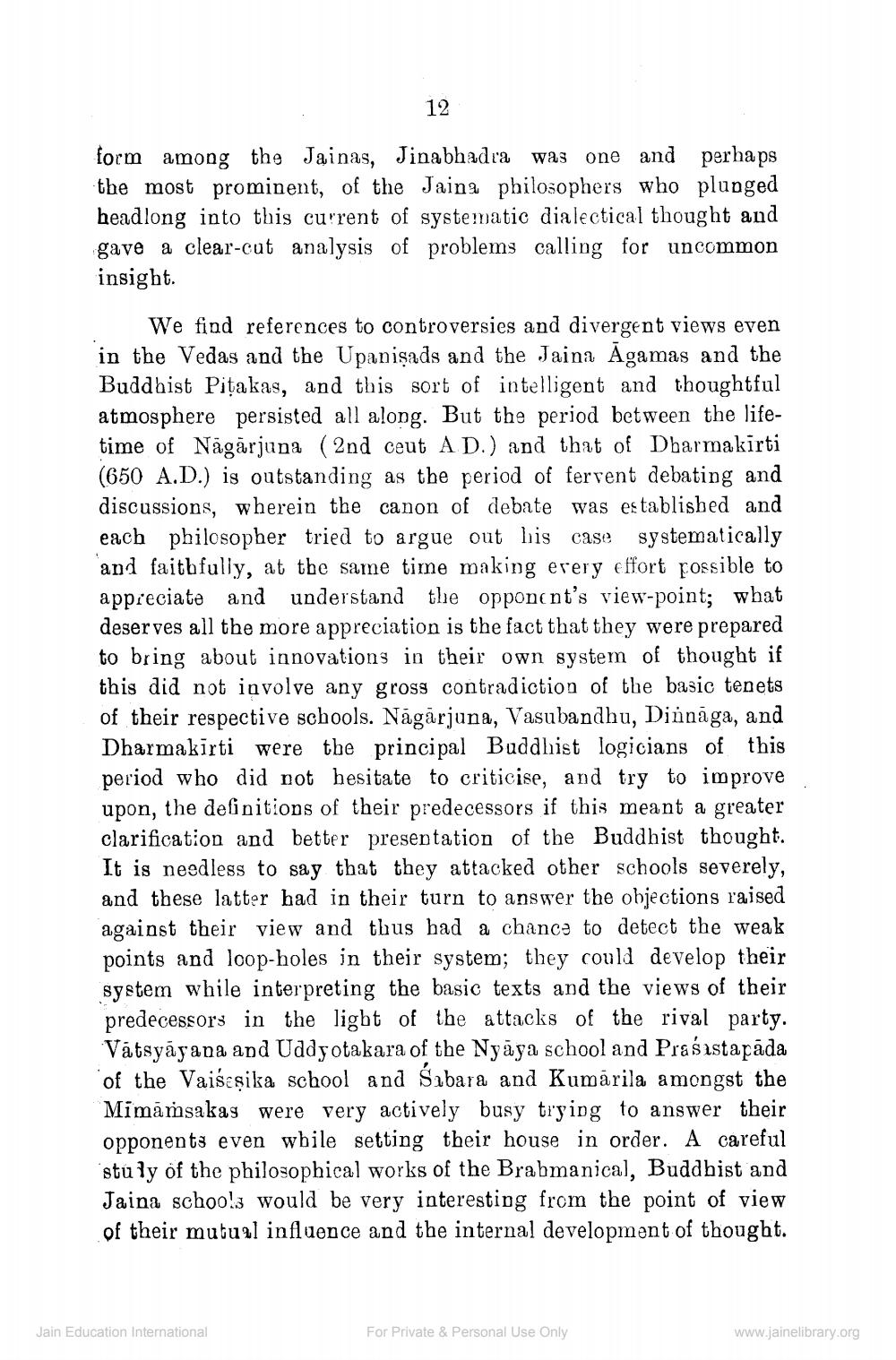________________
12
form among the Jainas, Jinabhadra was one and perhaps the most prominent, of the Jaina philosophers who plunged headlong into this current of systematic dialectical thought and gave a clear-cut analysis of problems calling for uncommon insight.
We find references to controversies and divergent views even in the Vedas and the Upanişads and the Jaina Āgamas and the Buddhist Pitakas, and this sort of intelligent and thoughtful atmosphere persisted all along. But the period between the lifetime of Nägārjuna (2nd ceut A D.) and that of Dbarmakirti (650 A.D.) is outstanding as the period of fervent debating and discussions, wherein the canon of debate was established and each philosopher tried to argue out his case systematically and faithfully, at the same time making erery effort possible to appreciate and understand the opponent's view-point; what deserves all the more appreciation is the fact that they were prepared to bring about innovations in their own system of thought if this did not involve any gross contradiction of the basic tenets of their respective schools. Nāgārjuna, Vasubandhu, Dinnāga, and Dharmakirti were the principal Buddhist logicians of this period who did not hesitate to criticise, and try to improve upon, the definitions of their predecessors if this meant a greater clarification and better presentation of the Buddhist thought. It is needless to say that they attacked other schools severely, and these latter had in their turn to answer the objections raised against their view and thus had a chance to detect the weak points and loop-holes in their system; they could develop their system while interpreting the basic texts and the views of their predecessors in the light of the attacks of the rival party. Vatsyāyana and Uddyotakara of the Nyaya school and Prasastapāda of the Vaišeșika school and Sabara and Kumārila amongst the Mimāmsakas were very actively busy trying to answer their opponents even while setting their house in order. A careful stu ly of the philosophical works of the Brabmanical, Buddhist and Jaina schools would be very interesting from the point of view of their mutual influence and the internal development of thought.
Jain Education International
For Private & Personal Use Only
www.jainelibrary.org




